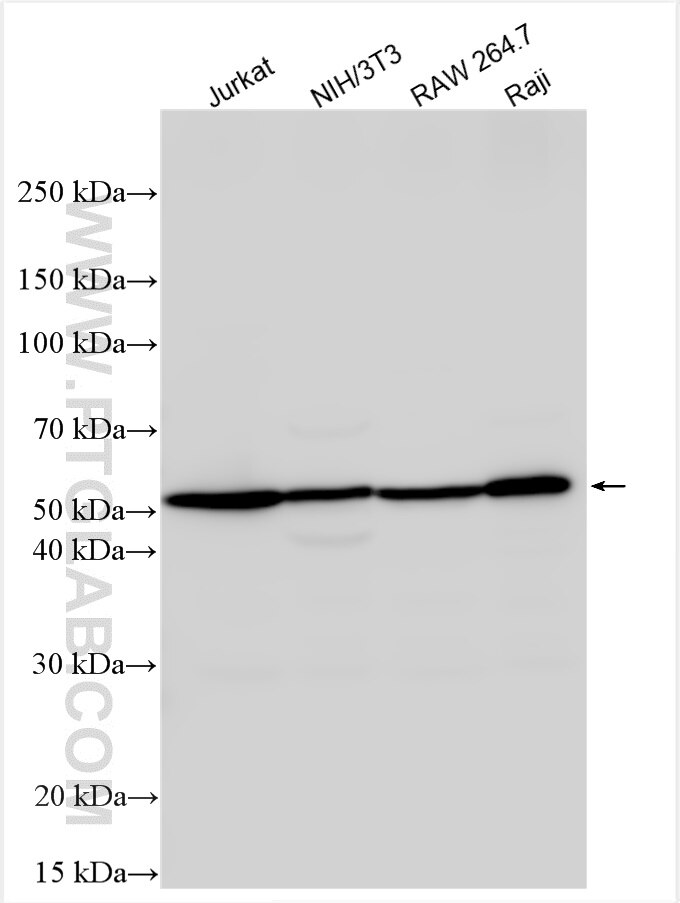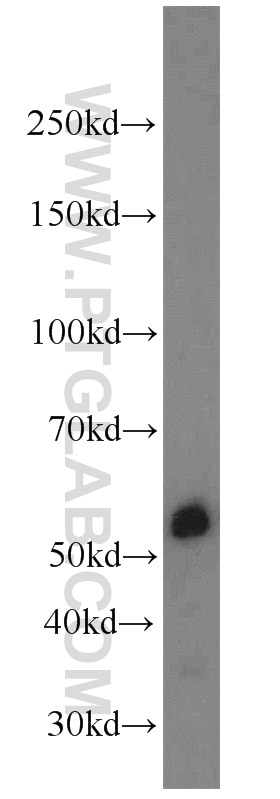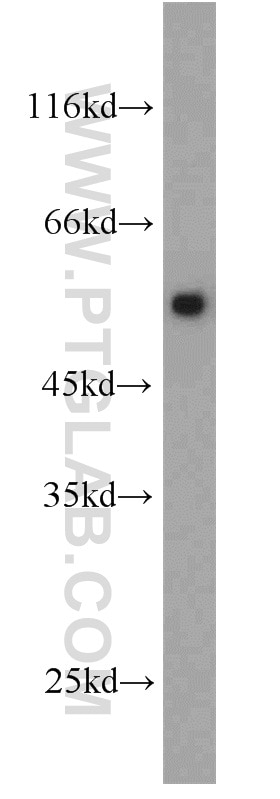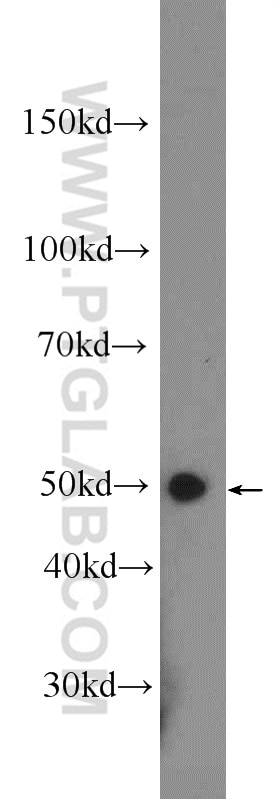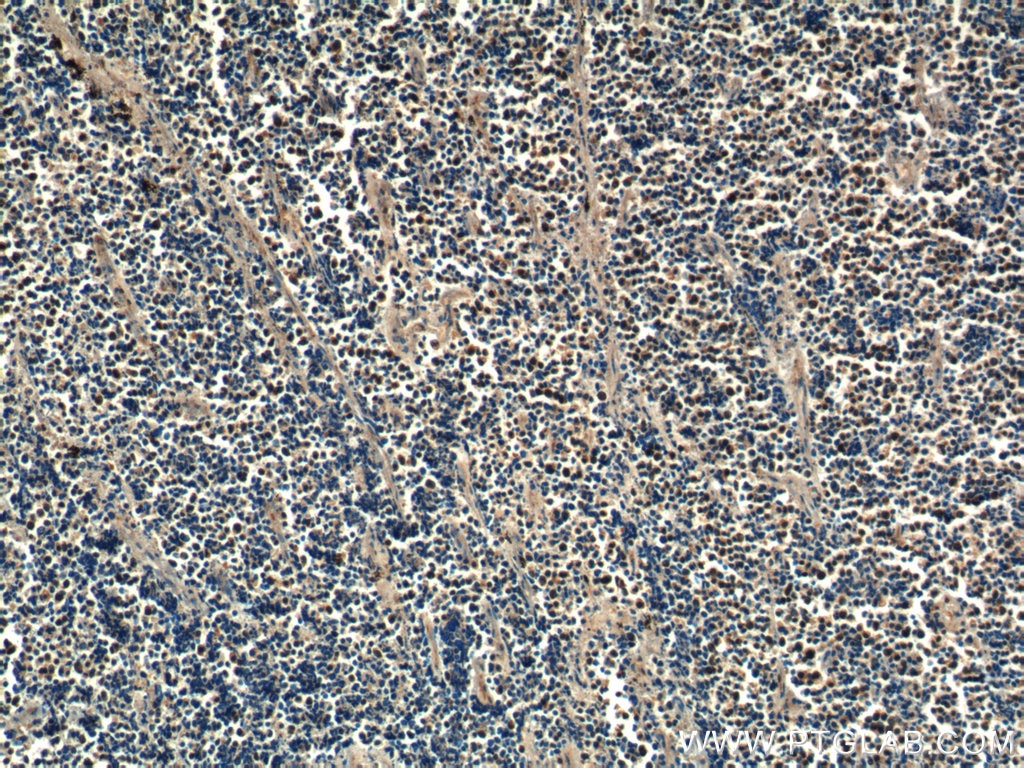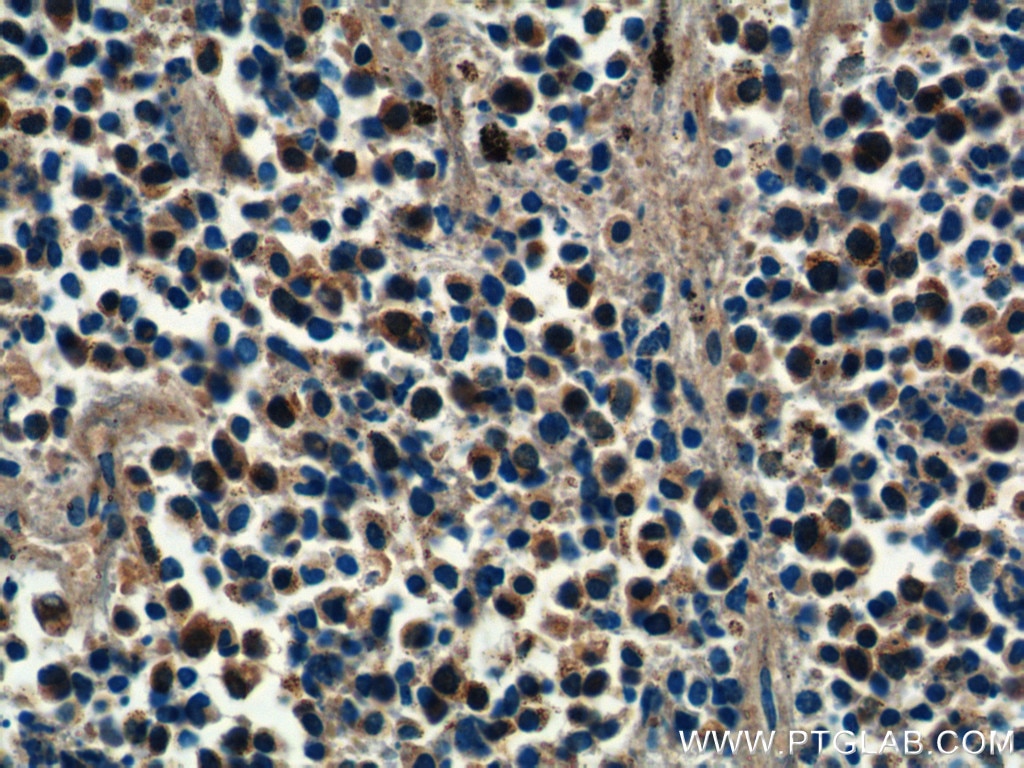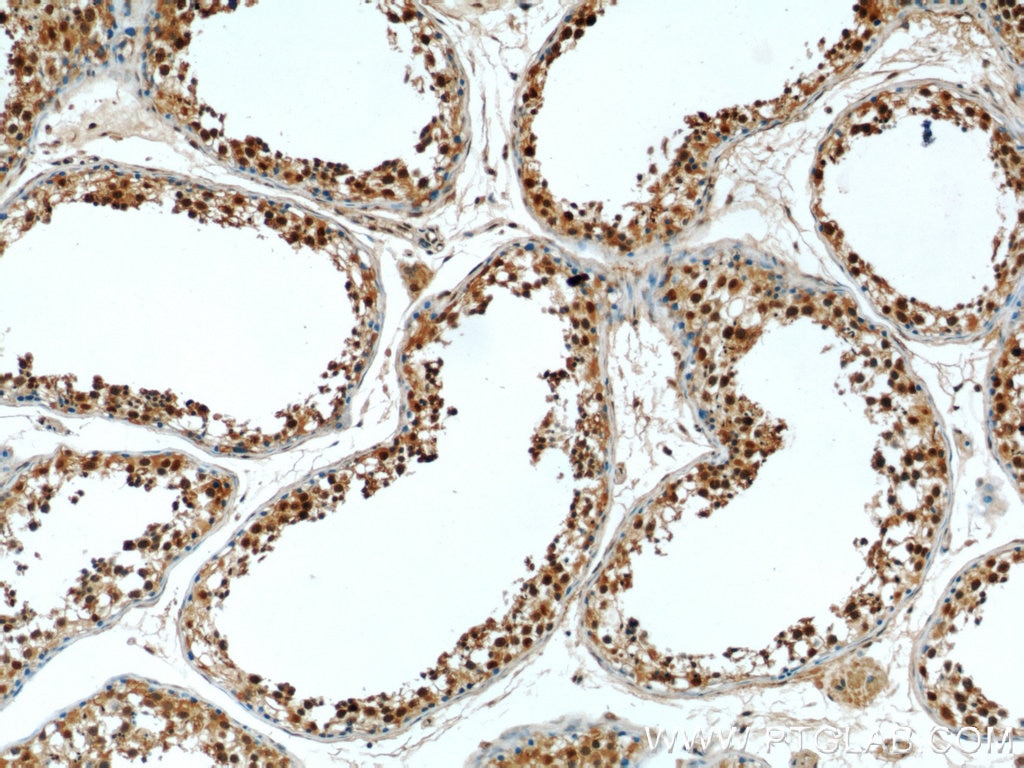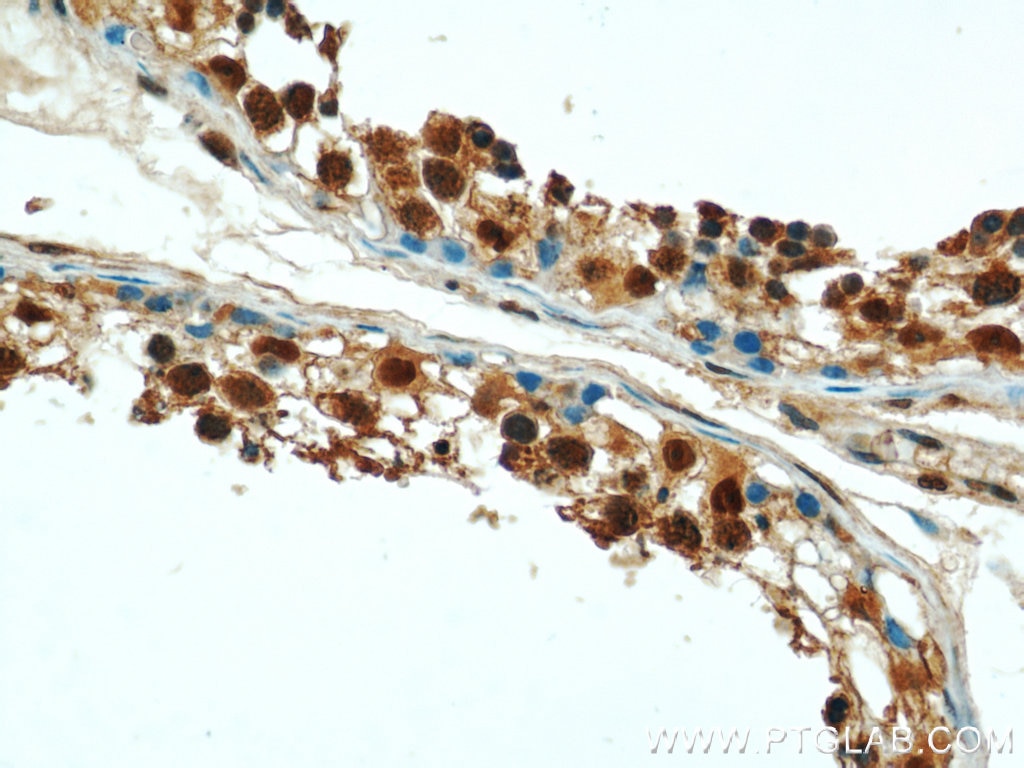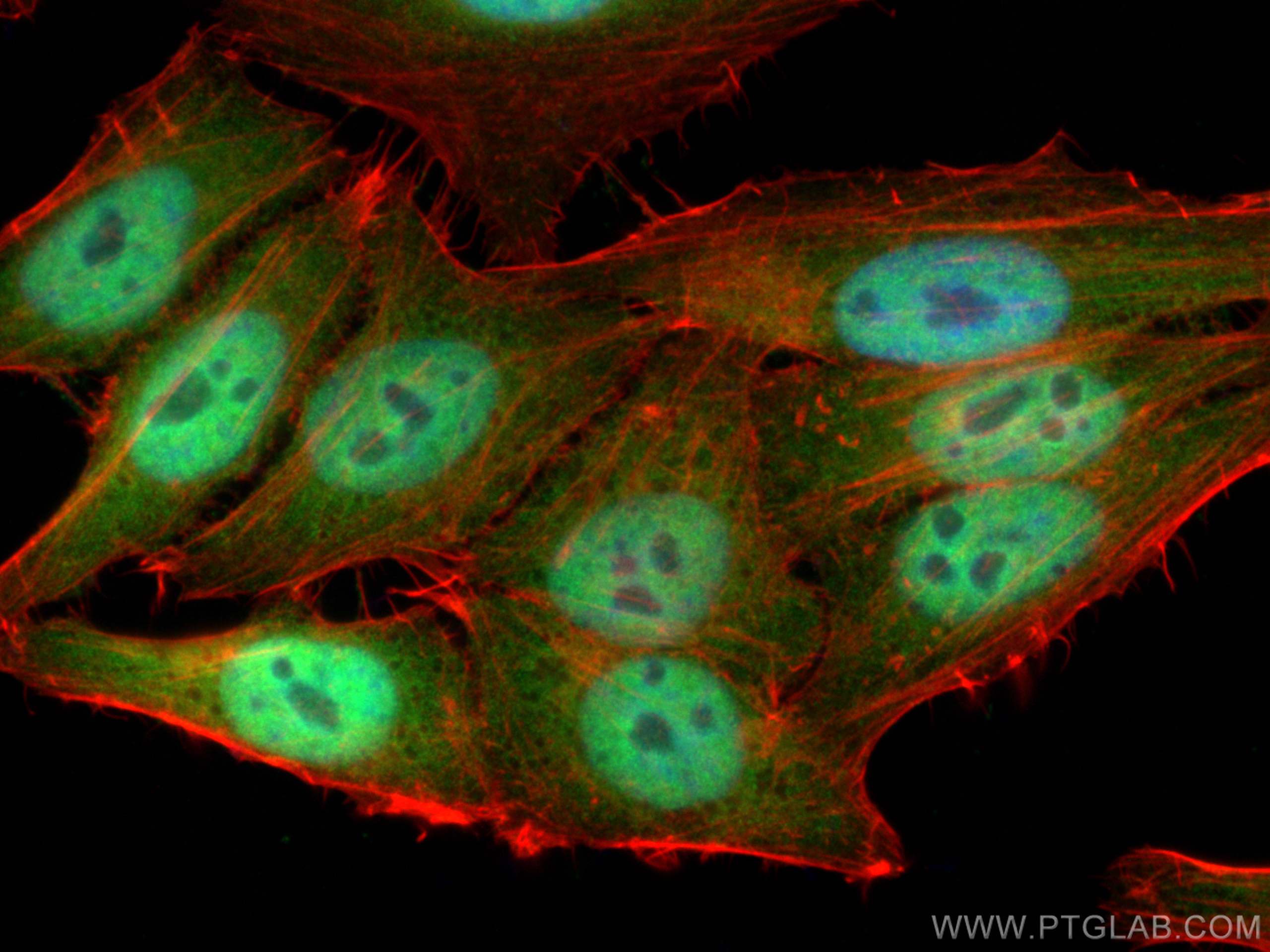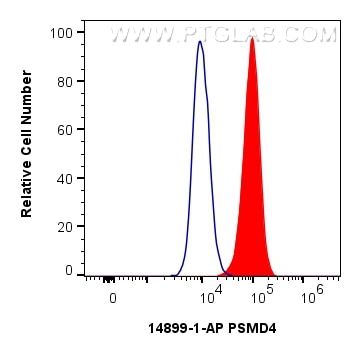- Featured Product
- KD/KO Validated
PSMD4 Polyklonaler Antikörper
PSMD4 Polyklonal Antikörper für WB, IHC, IF/ICC, FC (Intra), ELISA
Wirt / Isotyp
Kaninchen / IgG
Getestete Reaktivität
human, Maus, Ratte
Anwendung
WB, IHC, IF/ICC, FC (Intra), ELISA
Konjugation
Unkonjugiert
Kat-Nr. : 14899-1-AP
Synonyme
Geprüfte Anwendungen
| Erfolgreiche Detektion in WB | Jurkat-Zellen, HeLa-Zellen, K-562-Zellen, NIH/3T3-Zellen, Raji-Zellen, Rattenmilzgewebe, RAW264.7-Zellen |
| Erfolgreiche Detektion in IHC | humanes Lungenkarzinomgewebe, humanes Hodengewebe Hinweis: Antigendemaskierung mit TE-Puffer pH 9,0 empfohlen. (*) Wahlweise kann die Antigendemaskierung auch mit Citratpuffer pH 6,0 erfolgen. |
| Erfolgreiche Detektion in IF/ICC | HepG2-Zellen |
| Erfolgreiche Detektion in FC (Intra) | HepG2-Zellen |
Empfohlene Verdünnung
| Anwendung | Verdünnung |
|---|---|
| Western Blot (WB) | WB : 1:5000-1:50000 |
| Immunhistochemie (IHC) | IHC : 1:50-1:500 |
| Immunfluoreszenz (IF)/ICC | IF/ICC : 1:50-1:500 |
| Durchflusszytometrie (FC) (INTRA) | FC (INTRA) : 0.80 ug per 10^6 cells in a 100 µl suspension |
| It is recommended that this reagent should be titrated in each testing system to obtain optimal results. | |
| Sample-dependent, check data in validation data gallery | |
Veröffentlichte Anwendungen
| KD/KO | See 3 publications below |
| WB | See 12 publications below |
| IHC | See 2 publications below |
| IF | See 2 publications below |
Produktinformation
14899-1-AP bindet in WB, IHC, IF/ICC, FC (Intra), ELISA PSMD4 und zeigt Reaktivität mit human, Maus, Ratten
| Getestete Reaktivität | human, Maus, Ratte |
| In Publikationen genannte Reaktivität | human, Maus |
| Wirt / Isotyp | Kaninchen / IgG |
| Klonalität | Polyklonal |
| Typ | Antikörper |
| Immunogen | PSMD4 fusion protein Ag6691 |
| Vollständiger Name | proteasome (prosome, macropain) 26S subunit, non-ATPase, 4 |
| Berechnetes Molekulargewicht | 41 kDa |
| Beobachtetes Molekulargewicht | 50 kDa |
| GenBank-Zugangsnummer | BC002365 |
| Gene symbol | PSMD4 |
| Gene ID (NCBI) | 5710 |
| Konjugation | Unkonjugiert |
| Form | Liquid |
| Reinigungsmethode | Antigen-Affinitätsreinigung |
| Lagerungspuffer | PBS with 0.02% sodium azide and 50% glycerol |
| Lagerungsbedingungen | Bei -20°C lagern. Nach dem Versand ein Jahr lang stabil Aliquotieren ist bei -20oC Lagerung nicht notwendig. 20ul Größen enthalten 0,1% BSA. |
Hintergrundinformationen
PSMD4, also named as MCB1, AF or ASF, belongs to the proteasome subunit S5A family. PSMD4 is a 50-kD subunit of the regulatory complex of the 26S proteasome. It binds and presumably selects ubiquitin-conjugates for destruction. PSMD4 displays selectivity for longer polyubiquitin chains. It modulates intestinal fluid secretion. PSMD4 is exposed on the sperm acrosomal surface, a notion that was further supported by the binding of non-cell permeant, biotinylated proteasomal inhibitor ZL3VS to the sperm acrosome. It is involved in the sperm-ZP penetration during fertilization. (PMID: 20526895) This antibody is specific to PSMD4.
Protokolle
| PRODUKTSPEZIFISCHE PROTOKOLLE | |
|---|---|
| WB protocol for PSMD4 antibody 14899-1-AP | Protokoll herunterladen |
| IHC protocol for PSMD4 antibody 14899-1-AP | Protokoll herunterladenl |
| IF protocol for PSMD4 antibody 14899-1-AP | Protokoll herunterladen |
| FC protocol for PSMD4 antibody 14899-1-AP | Download protocol |
| STANDARD-PROTOKOLLE | |
|---|---|
| Klicken Sie hier, um unsere Standardprotokolle anzuzeigen |
Publikationen
| Species | Application | Title |
|---|---|---|
Nat Neurosci Loss of nuclear UBE3A causes electrophysiological and behavioral deficits in mice and is associated with Angelman syndrome. | ||
J Cell Biol The transition zone protein Rpgrip1l regulates proteasomal activity at the primary cilium. | ||
Cancer Res The Ubiquitin-like Protein FAT10 Stabilizes eEF1A1 Expression to Promote Tumor Proliferation in a Complex Manner. | ||
Oncogene The degradation of p53 and its major E3 ligase Mdm2 is differentially dependent on the proteasomal ubiquitin receptor S5a. | ||
J Cell Sci S5a binds to death receptor-6 to induce THP-1 monocytes to differentiate through the activation of the NF-κB pathway. | ||
Mol Cell Proteomics Proteaphagy in Mammalian Cells Can Function Independent of ATG5/ATG7. |
